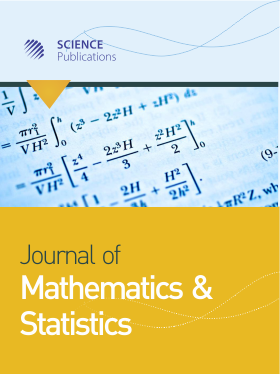Time Series Analysis of Rainfall and Temperature Interactions in Coastal Catchments
Abstract
Problem statement: As a result of climate change more work is now being done on climate indices such as SOI, rainfall, temperature and so on. The research concerning rainfall and temperature variations in coastal tropical and subtropical catchments as noted by the dated references in this study shows a lack of attention. The authors examined long term data from coastal areas of Queensland. Australian climate is highly variable making the identification of trends or interactions between rainfall and temperature difficult to discern from background variation. Due to the lack of attention in the past, this study examined the relationships between rainfall, temperature, minimum temperature and maximum temperature as well as over time using time series methods. In particular, the study examined whether a cyclic nature existed in the data sets and whether a simple trend relationship between rainfall and temperature existed. To examine autocorrelation and seasonality ARIMA models were also investigated. Approach: A large data set involving more that 50 years of rainfall and temperature data were examined using spectral analysis, time series analysis-ARIMA methodology to analyse climatic trends and interactions. Fourier analysis, linear regression and ARIMA based time series models were used to analyze the large data sets using Matlab, SPSS and SAS programs. Results: The rainfall data was variable and appeared seasonal while the temperature data appeared stationary. Interestingly, spectral analysis showed variations in rainfall and temperature over 50-60 years but the results showed that rainfall and temperature varied coherently, with a cycle of about 2-3 years. An inverse relationship in trend was noted between rainfall and daily temperature range using linear regression among the variables. The ARIMA models showed autocorrelation and seasonality providing time series models. Conclusion/Recommendations: There is a cyclic pattern noted in both the rainfall and temperature time series and a cycle of about 3 years in the rainfall and temperature data sets suggesting a coherent variance in the relationship. This is an interesting finding suggesting a cyclic nature of large rainfall events over time and has been confirmed by the recent large rainfalls events in 2009-10. Linear regression showed an inverse relationship in trend between rainfall and temperature range only even though the r value was around 0.27. The autocorrelation in the data appears to have caused the low r and ARIMA methods was used giving time series models for each series allowing for autocorrelation and seasonality. This study on rainfall and temperature is valuable contribution to the lack of research noted particularly in Queensland as noted in the dated references found; also contributing to the climate change debate forcing it on the cautious side. Further work involving multivariate and dynamic conditional correlation methods may provide further insights regarding the relationships between rainfall and temperature. More climatic indices such as SOI may be used in future studies.
DOI: https://doi.org/10.3844/jmssp.2010.372.380

- 8,367 Views
- 13,757 Downloads
- 30 Citations
Download
Keywords
- Time series
- ARIMA model
- periodogram
- spectral analysis
- Fourier
